Cover Collection: John Clymer’s Perfect Fall Day
Artist John Clymer was a master at capturing the essence of the seasons, whether it was the delicate pink spring blooms or the bracing snap of a winter day. But autumn seemed to capture a special place in Clymer’s heart, as many of the 80 covers he painted for the Post portray this colorful season. We offer a selection of our favorites here.
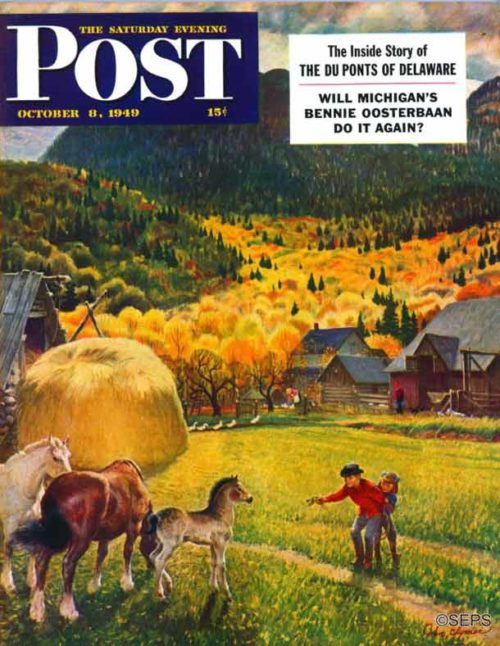
October 8, 1949
John Clymer painted this scene from his Westport, Connecticut, studio. This beautiful landscape of Washington State was recreated from memory and sketches, which he had previously made on the spot on the eastern slope of the Cascade Range. Above the town of Cle Elum the red and gold of fall climbs into the evergreen of the foothills, which in turn climb toward the big peaks where the snow comes early. Clymer believed that the little farms that snuggle cozily in the high valleys are a wonderful place to spend one’s childhood, whether one is a boy, a girl or a colt.
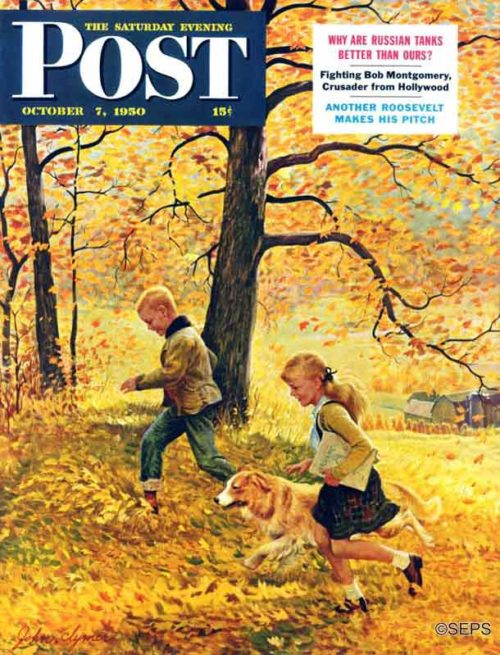
October 7, 1950
Clymer created over 80 covers for The Saturday Evening Post between 1942-1962, often portraying patriotic or western scenes. During World War II, he created illustrations for the Marine Corps magazines Leatherneck and The Marine Corps Gazette. After the war, John returned to his successful illustration business. In addition to creating charming scenes such as these two children kicking through fall leaves, Clymer also had a large stable of advertising clients including White House Scotch Whiskey, The Pennsylvania Railroad, and The Chrysler Corporation.
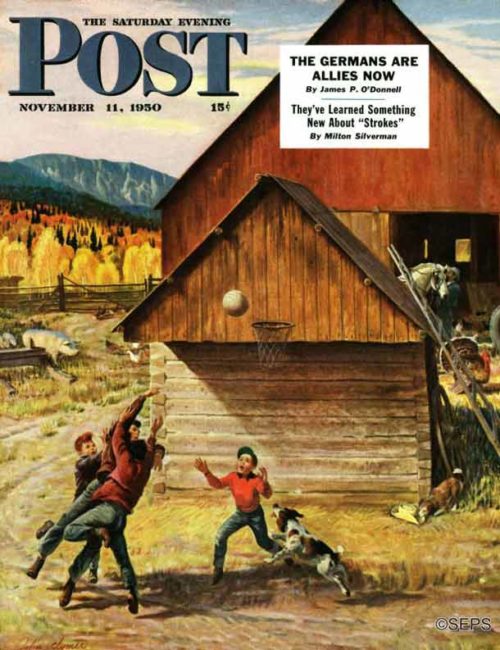
November 11, 1950
This painting will resonate with anyone who loves the movie Hoosiers, although the mountains in the background assure us that the scene is decidedly not in Indiana. Clymer was asked if one of the lads was committing a foul. He scoffed, “Certainly not. That do you want him to do, how from the waist and say, Please, may I have the ball?'”
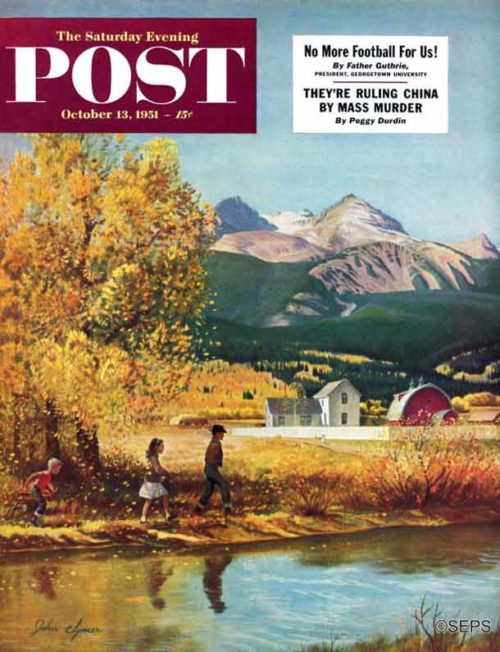
October 13, 1951
Although Clymer spent most of his adulthood in the east, he returned again and again to the landscapes of his youth. Unable to put all of America on one canvas, Clymer settled for a mountain valley in Colorado, where pines and cottonwoods waged a color battle in the foothills of the Rockies.
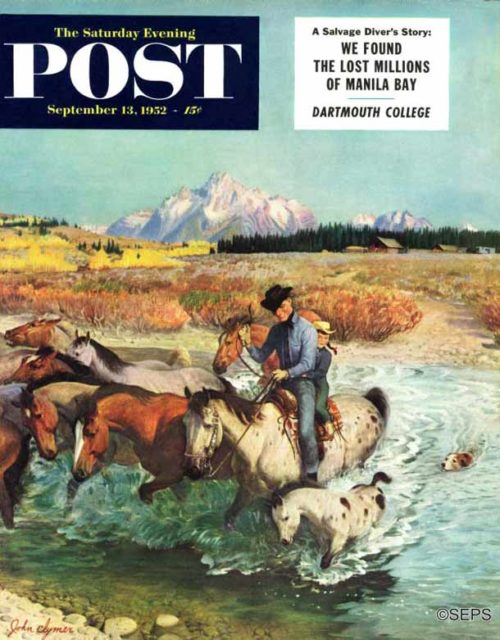
September 13, 1952
This rancher and his daughter are moving a herd of horses from one place to another in high, wide and handsome Wyoming. Note the position of the dog in the water. Clymer first painted that dog far back on the trail, then moved him up near the creek, then drew him splashing into the water, then put him where he is now and hurriedly sent the painting to the Post before he could change his mind again.
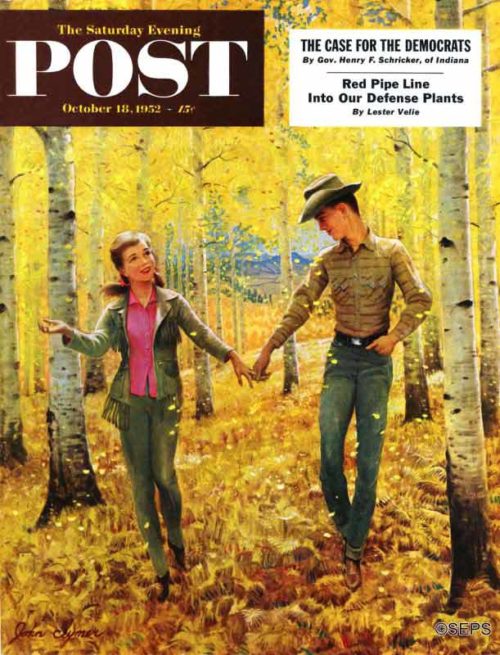
October 18, 1952
Until a traveling magazine salesman sold the Clymer family several magazine subscriptions, the artist did not have an inkling what his future might hold. Enamored by the work of Walt Louderback that he saw within these publications, Clymer chose his profession. He said, “When I got into my early teens, like all boys, I got to wondering what in the world could I do to make a living and live in the mountains? One day I got to thinking about it and thought, that’s it! I’ll paint pictures and then I can live wherever I want to live.”
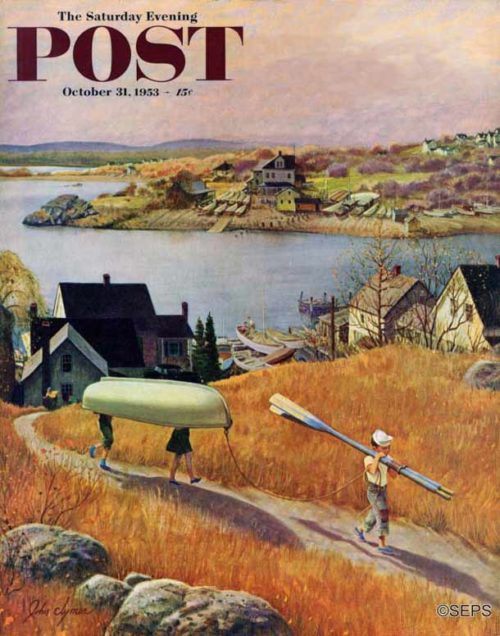
October 31, 1953
Throughout the 1950s and into the 1960s, Clymer’s Post covers carried themes that were simple and pleasurable: a picnic lunch, a nature hike, or an afternoon ride through the apple orchard. In all cases, the figures seem dwarfed by the majesty of the American West. His characters reflect a childlike wonder at the enormity of nature. The beauty of his approach is in his ability to transcend a specific place in time.
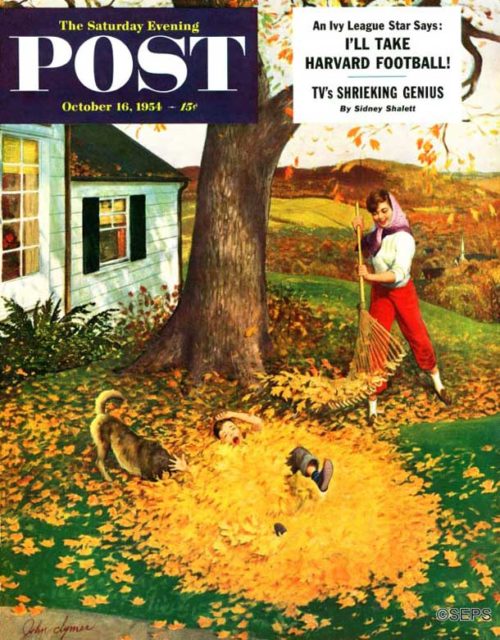
October 16, 1954
When writing the description to accompany this cover, the editors of the 1954 Post asked, “how long will it be before somebody invents a suburban-lawn-type, motorized, leaf- raking combine, equipped with semiautomatic steering wheel, chaise longue for the operator, soft-drink-vending machine, radio, foot warmer and convertible top, to sell for $99.98?” We’re happy to report that, in 2017, such a device can be purchased (minus the soft drink machine), but it will cost you a little more than $99.98.